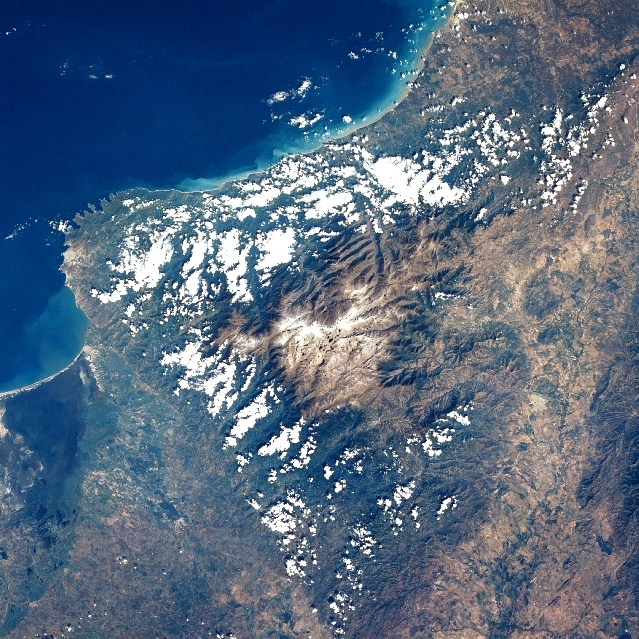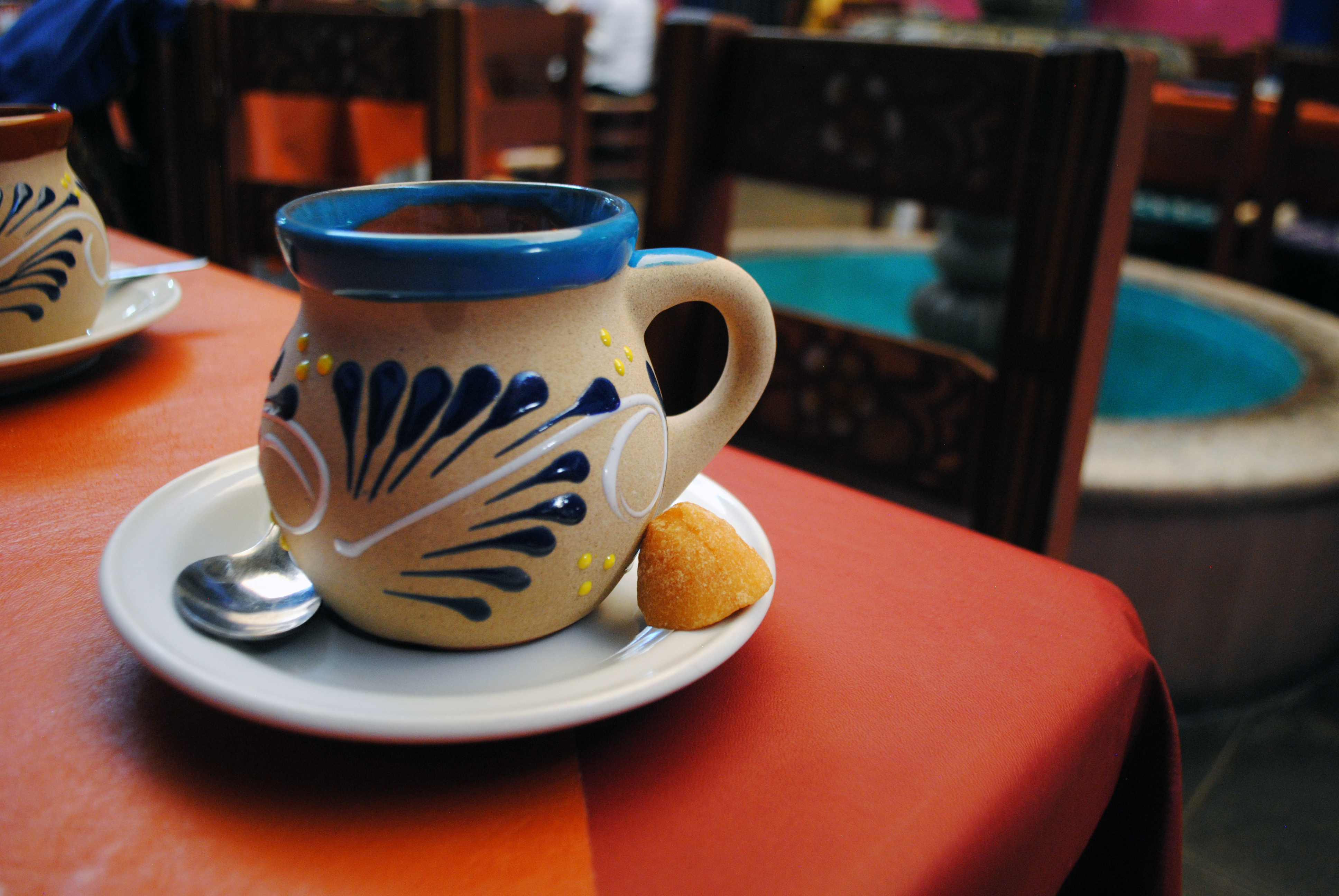|
Quinta De San Pedro Alejandrino
The Quinta de San Pedro Alejandrino ( en, Quinta of Saint Peter of Alexandria) is an ''hacienda'' or ''quinta'' built in the 17th century, famous for being the death place of Simón Bolívar on December 17, 1830. The hacienda is located in the corregimiento of Mamatoco within the tourist district of Santa Marta, near the Caribbean sea in northern Colombia. In Bolívar's time, the estate produced rum, honey and panela Panela () or rapadura (Portuguese pronunciation: ) is an unrefined whole cane sugar, typical of Central and Latin America. It is a solid form of sucrose derived from the boiling and evaporation of sugarcane juice. Panela is known by other na .... Nowadays it functions as a tourist site, museum and historical landmark. Simón Bolívar is considered one of the most influential people in the struggle for independence for South American countries including Colombia, Venezuela, Ecuador, Peru and Bolivia. This museum is considered a tourist site where others can ... [...More Info...] [...Related Items...] OR: [Wikipedia] [Google] [Baidu] |
Pope Peter I Of Alexandria
Pope Peter I of Alexandria ( cop, Ⲡⲁⲡⲁ Ⲁⲃⲃⲁ ⲡⲉⲧⲣⲟⲥ ⲁ̅, ⲡⲓⲁⲅⲓⲟⲥ ⲡⲉⲧⲣⲟⲥ ⲓⲉⲣⲟⲙⲁⲣⲧⲩⲣⲟⲥ ⲡⲓⲁⲣⲭⲏⲉⲣⲉⲩⲥ) was the 17th Pope and Patriarch of Alexandria. He is revered as a saint by the Coptic Orthodox Church, the Eastern Orthodox Church, and the Catholic Church. Life Peter was born and raised in Alexandria. The Coptic Orthodox Church believes that Peter was given by his parents to Theonas to be brought up as a priest, similarly to the story of Samuel in the Old Testament. He rose through the ranks of holy orders, first becoming a reader, then a deacon, then a priest. Highly educated, Peter became head of the school of Alexandria. In early 300, while on his death bed, Theonas advised the church leaders to choose Peter as his successor, which they did. Peter's time as bishop included the Diocletianic Persecution, which began in 303, and continued intermittently over the next ten years. ... [...More Info...] [...Related Items...] OR: [Wikipedia] [Google] [Baidu] |
Hacienda
An ''hacienda'' ( or ; or ) is an estate (or ''finca''), similar to a Roman ''latifundium'', in Spain and the former Spanish Empire. With origins in Andalusia, ''haciendas'' were variously plantations (perhaps including animals or orchards), mines or factories, with many ''haciendas'' combining these activities. The word is derived from Spanish ''hacer'' (to make, from Latin ''facere'') and ''haciendo'' (making), referring to productive business enterprises. The term ''hacienda'' is imprecise, but usually refers to landed estates of significant size, while smaller holdings were termed ''estancias'' or ''ranchos''. All colonial ''haciendas'' were owned almost exclusively by Spaniards and criollos, or rarely by mestizo individuals. In Mexico, as of 1910, there were 8,245 haciendas in the country. In Argentina, the term ''estancia'' is used for large estates that in Mexico would be termed ''haciendas''. In recent decades, the term has been used in the United States for an archi ... [...More Info...] [...Related Items...] OR: [Wikipedia] [Google] [Baidu] |
Simón Bolívar
Simón José Antonio de la Santísima Trinidad Bolívar y Palacios (24 July 1783 – 17 December 1830) was a Venezuelan military and political leader who led what are currently the countries of Colombia, Venezuela, Ecuador, Peru, Panama and Bolivia to independence from the Spanish Empire. He is known colloquially as '' El Libertador'', or the ''Liberator of America''. Simón Bolívar was born in Caracas in the Captaincy General of Venezuela into a wealthy criollo family. Before he turned ten, he lost both parents and lived in several households. Bolívar was educated abroad and lived in Spain, as was common for men of upper-class families in his day. While living in Madrid from 1800 to 1802, he was introduced to Enlightenment philosophy and met his future wife María Teresa Rodríguez del Toro y Alaysa. After returning to Venezuela, in 1803 del Toro contracted yellow fever and died. From 1803 to 1805, Bolívar embarked on a grand tour that ended in Rome, where he swore to end ... [...More Info...] [...Related Items...] OR: [Wikipedia] [Google] [Baidu] |
Corregimiento
''Corregimiento'' (; ca, Corregiment, ) is a Spanish term used for country subdivisions for royal administrative purposes, ensuring districts were under crown control as opposed to local elites. A ''corregimiento'' was usually headed by a '' corregidor''. Historical corregimientos ''Corregimientos'' were found historically in the Kingdom of Castile, the Kingdom of Aragon, and the Spanish West Indies. Castile In Old Castile ''corregimientos'' existed since the 13th century and were the administrative divisions of the ''Junta General de las Siete Merindades de Castilla Vieja''. After the Nueva Planta decrees under the rule of Philip V—the first Bourbon king of Spain, the ''corregidor'' was replaced by an intendant. ''Corregimientos'' in Castile existed until 1835, the year in which the municipal administration was reorganized under Queen Isabel II. Crown of Aragon In the territories of Aragon, Catalonia, and the Land of Valencia formerly under the ancient Crown of Aragon, the ... [...More Info...] [...Related Items...] OR: [Wikipedia] [Google] [Baidu] |
Santa Marta
Santa Marta (), officially Distrito Turístico, Cultural e Histórico de Santa Marta ("Touristic, Cultural and Historic District of Santa Marta"), is a city on the coast of the Caribbean Sea in northern Colombia. It is the capital of Magdalena Department and the fourth-largest urban city of the Caribbean Region of Colombia, after Barranquilla, Cartagena, and Soledad. Founded on July 29, 1525, by the Spanish conqueror Rodrigo de Bastidas, it was the first Spanish settlement in Colombia, its oldest surviving city, and second oldest in South America. This city is situated on a bay by the same name and as such, it is a prime tourist destination in the Caribbean region. History Pre-Colombian times Before the arrival of Europeans, the South American continent was inhabited by a number of indigenous groups. Due to a combination of tropical weather, significant rainfall, and the destruction and misrepresentation of many records by Spanish conquistadors, our understanding of the ... [...More Info...] [...Related Items...] OR: [Wikipedia] [Google] [Baidu] |
Caribbean Sea
The Caribbean Sea ( es, Mar Caribe; french: Mer des Caraïbes; ht, Lanmè Karayib; jam, Kiaribiyan Sii; nl, Caraïbische Zee; pap, Laman Karibe) is a sea of the Atlantic Ocean in the tropics of the Western Hemisphere. It is bounded by Mexico and Central America to the west and southwest, to the north by the Greater Antilles starting with Cuba, to the east by the Lesser Antilles, and to the south by the northern coast of South America. The Gulf of Mexico lies to the northwest. The entire area of the Caribbean Sea, the numerous islands of the West Indies, and adjacent coasts are collectively known as the Caribbean. The Caribbean Sea is one of the largest seas and has an area of about . The sea's deepest point is the Cayman Trough, between the Cayman Islands and Jamaica, at below sea level. The Caribbean coastline has many gulfs and bays: the Gulf of Gonâve, Gulf of Venezuela, Gulf of Darién, Golfo de los Mosquitos, Gulf of Paria and Gulf of Honduras. The Caribbean Sea has ... [...More Info...] [...Related Items...] OR: [Wikipedia] [Google] [Baidu] |
Colombia
Colombia (, ; ), officially the Republic of Colombia, is a country in South America with insular regions in North America—near Nicaragua's Caribbean coast—as well as in the Pacific Ocean. The Colombian mainland is bordered by the Caribbean Sea to the north, Venezuela to the east and northeast, Brazil to the southeast, Ecuador and Peru to the south and southwest, the Pacific Ocean to the west, and Panama to the northwest. Colombia is divided into 32 departments and the Capital District of Bogotá, the country's largest city. It covers an area of 1,141,748 square kilometers (440,831 sq mi), and has a population of 52 million. Colombia's cultural heritage—including language, religion, cuisine, and art—reflects its history as a Spanish colony, fusing cultural elements brought by immigration from Europe and the Middle East, with those brought by enslaved Africans, as well as with those of the various Amerindian civilizations that predate colonization. Spanish is th ... [...More Info...] [...Related Items...] OR: [Wikipedia] [Google] [Baidu] |
Honey
Honey is a sweet and viscous substance made by several bees, the best-known of which are honey bees. Honey is made and stored to nourish bee colonies. Bees produce honey by gathering and then refining the sugary secretions of plants (primarily floral nectar) or the secretions of other insects, like the honeydew of aphids. This refinement takes place both within individual bees, through regurgitation and enzymatic activity, as well as during storage in the hive, through water evaporation that concentrates the honey's sugars until it is thick and viscous. Honey bees stockpile honey in the hive. Within the hive is a structure made from wax called honeycomb. The honeycomb is made up of hundreds or thousands of hexagonal cells, into which the bees regurgitate honey for storage. Other honey-producing species of bee store the substance in different structures, such as the pots made of wax and resin used by the stingless bee. Honey for human consumption is collected from wild ... [...More Info...] [...Related Items...] OR: [Wikipedia] [Google] [Baidu] |
Panela
Panela () or rapadura (Portuguese pronunciation: ) is an unrefined whole cane sugar, typical of Central and Latin America. It is a solid form of sucrose derived from the boiling and evaporation of sugarcane juice. Panela is known by other names in Latin America, such as ''chancaca'' in Chile, Bolivia, and Peru, ''piloncillo'' in Mexico (where ''panela'' refers to a type of cheese, ''queso panela''). The name ''piloncillo'' means "little loaf", because of the traditional shape in which this smoky, caramelly, and earthy sugar is produced. Just like brown sugar, two varieties of ''piloncillo'' are available; one is lighter (''blanco'') and one darker (''oscuro''). Unrefined, it is commonly used in Mexico, where it has been around for at least 500 years. Made from crushed sugar cane, the juice is collected, boiled, and poured into molds, where it hardens into blocks. Elsewhere in the world, the word ''jaggery'' describes a similar foodstuff. Both are considered non-centrifugal can ... [...More Info...] [...Related Items...] OR: [Wikipedia] [Google] [Baidu] |
Houses In Colombia
A house is a single-unit residential building. It may range in complexity from a rudimentary hut to a complex structure of wood, masonry, concrete or other material, outfitted with plumbing, electrical, and heating, ventilation, and air conditioning systems.Schoenauer, Norbert (2000). ''6,000 Years of Housing'' (rev. ed.) (New York: W.W. Norton & Company). Houses use a range of different roofing systems to keep precipitation such as rain from getting into the dwelling space. Houses may have doors or locks to secure the dwelling space and protect its inhabitants and contents from burglars or other trespassers. Most conventional modern houses in Western cultures will contain one or more bedrooms and bathrooms, a kitchen or cooking area, and a living room. A house may have a separate dining room, or the eating area may be integrated into another room. Some large houses in North America have a recreation room. In traditional agriculture-oriented societies, domestic animals such as c ... [...More Info...] [...Related Items...] OR: [Wikipedia] [Google] [Baidu] |
.jpg)






